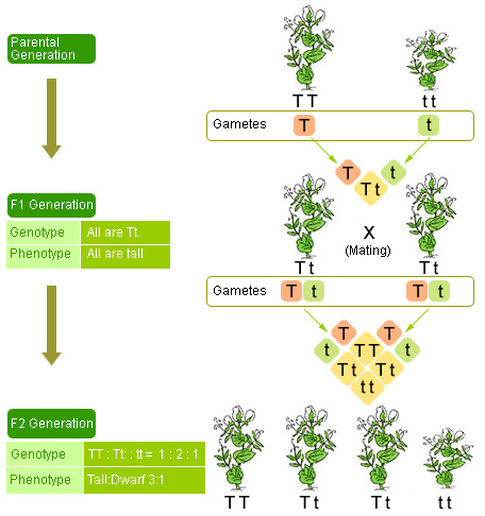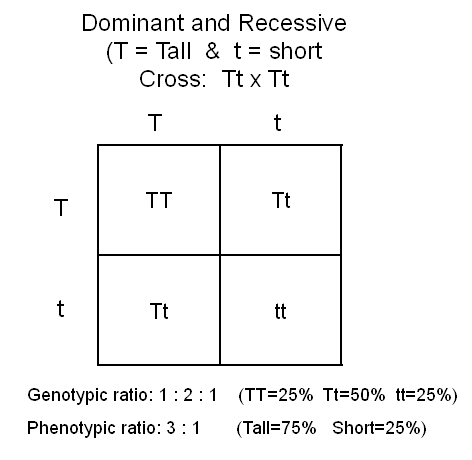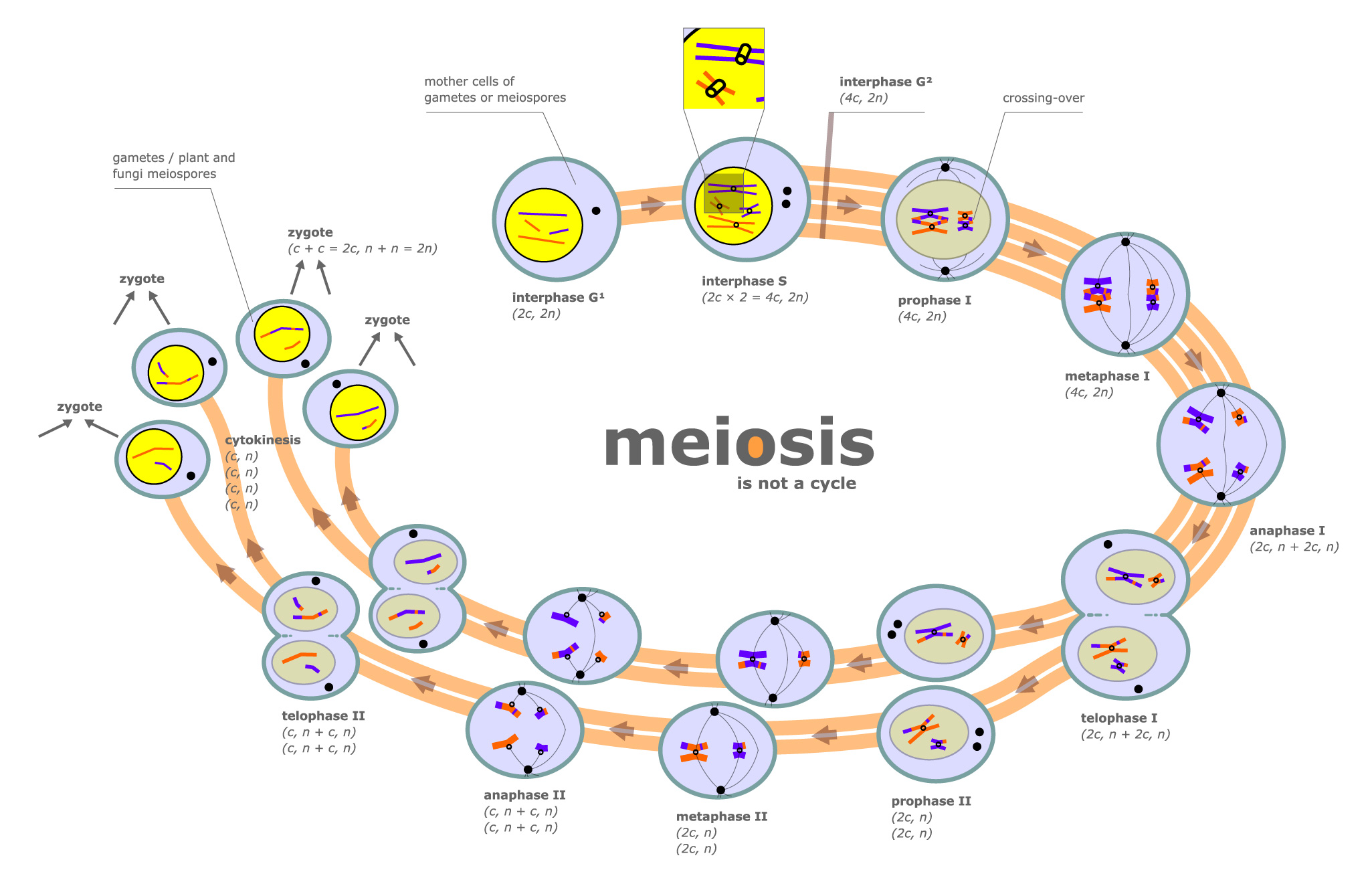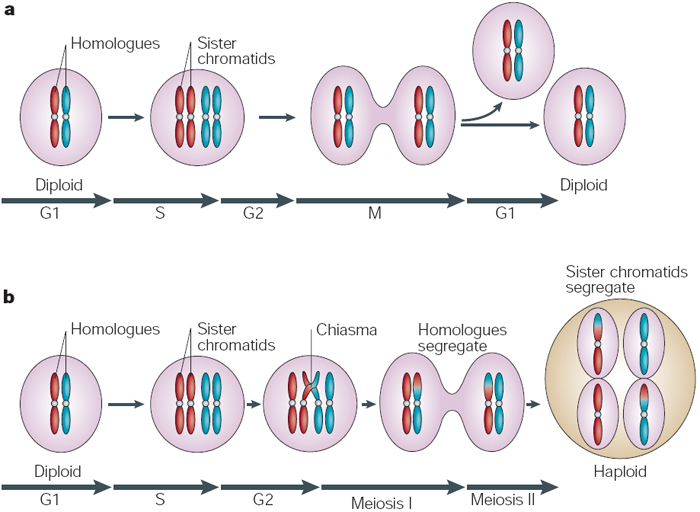(Chapters 9-10)
II.
Mitosis- Cyclic (never stops). The Cell Cycle:
A.
G1 Phase- ("1st growth") Cell elongates and becomes "normal" size.
B.
S Phase- ("
Synthesis" of DNA) DNA is replicated in this phase.
C.
G2 Phase- ("2nd growth") Organelles are "doubled."
(
Collectively these three phases are called Interphase)
D.
M Phase- ("
Mitosis") When the cell undergoes division.
E.
C Phase- ("
Cytokinesis") When the cell/s re-form membranes and other cytoskeletal structures. This starts
in the M Phase. Cell divides completely here.
III. M-Phase
A.
Interphase (G1, S, G2)- DNA replicates here but this process is invisible, because the DNA is in the form of
Chromatin- DNA is "uncondensed" and not wrapped around histames. The DNA is going from 46 pieces to 92 pieces of DNA.
B.
Prophase- DNA condenses around its histomes and forms
Chromosomes (visible). In chromosomes, two identical pieces of DNA called
Chromatids, are joined by a small bead called a
Centromere. The Nuclear membrane breaks down and the Chromatid pieces spread randomly through the cell. 2
Centrioles break from the
Centrosome and move to the poles of the cell.
C.
Metaphase- Chromatid pairs line up at the equator of the cell, and spindle fibers (made from microfiliments) develop from the centrioles and attach to them.
D.
Anaphase- Chromatin pairs separate and are pulled apart by the spindle and begin moving towards the poles.
E.
Telophase- Chromosomes reach the poles and Cytokinesis begins (the actual division of the cell)



